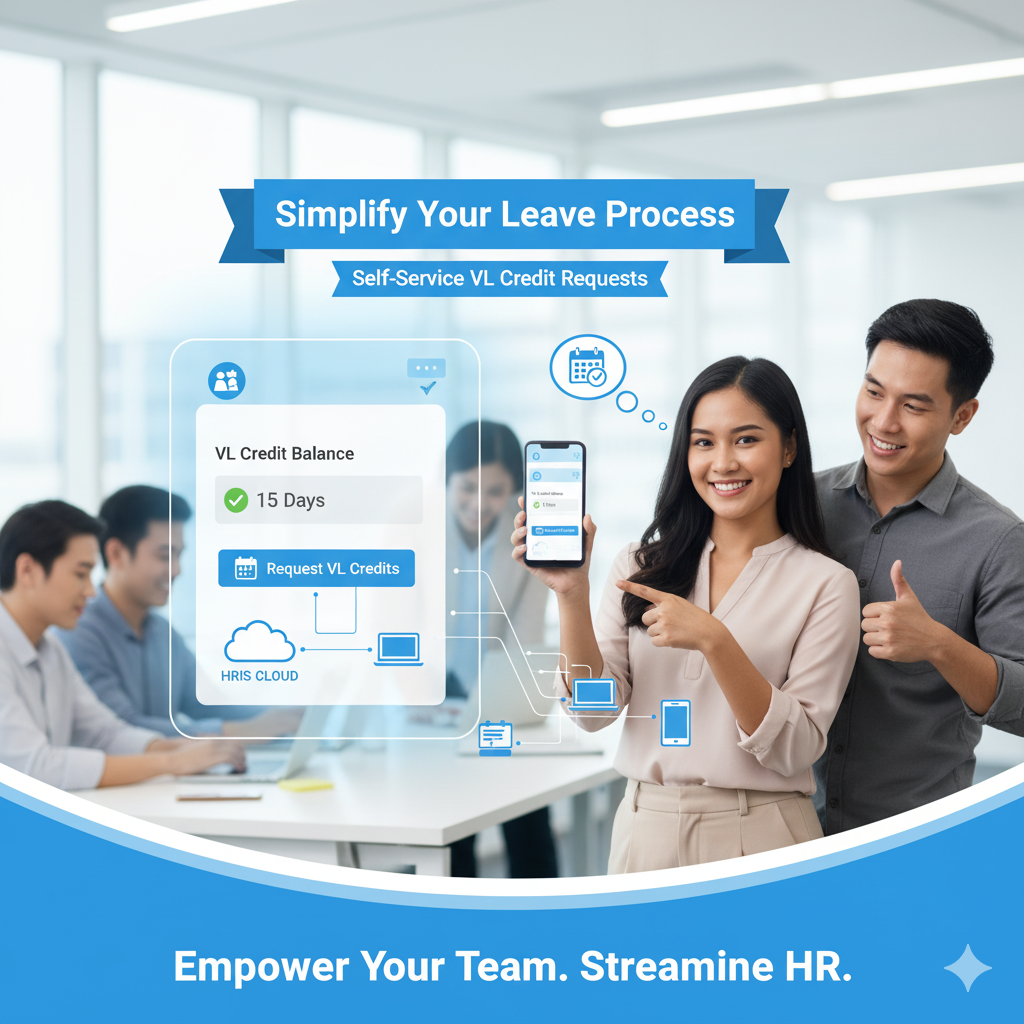Address
Kaypian, San Jose Del Monte City, Bulacan Philippines
Work Hours
Monday to Friday: 8AM - 6PM
Weekend: 10AM - 5PM
Address
Kaypian, San Jose Del Monte City, Bulacan Philippines
Work Hours
Monday to Friday: 8AM - 6PM
Weekend: 10AM - 5PM


Integrated HR. Accurate Payroll.


Integrated HR. Accurate Payroll.

Managing leave requests has always been one of the most repetitive and time-consuming tasks for HR teams. From manual forms to endless email threads, traditional leave management often leads to delays, errors, and frustration for both employees and HR staff.
Fortunately, the rise of Human Resource Information Systems (HRIS) has transformed how organizations handle leave credits—particularly Vacation Leave (VL) requests. Through HRIS self-service portals, employees can now request and track their VL credits with just a few clicks, making the process faster, more transparent, and more efficient for everyone involved.
An HRIS self-service VL credit request allows employees to file, track, and manage their vacation leave requests directly within the organization’s HR system—without needing manual intervention from HR personnel.
Employees can:
This automation not only empowers employees but also reduces administrative workload and potential human errors in leave tracking.
| Benefit | Impact on Organization |
| Efficiency | Speeds up filing and approval processes |
| Accuracy | Minimizes errors in VL balance tracking |
| Transparency | Enables both employees and HR to view leave data anytime |
| Employee Empowerment | Gives staff more control over their schedules |
| Cost Savings | Reduces paperwork and administrative overhead |
The shift toward self-service HRIS systems is more than just a digital upgrade—it’s a cultural change. Employees gain autonomy and visibility over their time-off requests, while HR teams experience significant efficiency gains.
The result?
✅ Happier employees
✅ Reduced manual workload
✅ Enhanced accuracy and compliance
✅ Streamlined HR operations
Simplifying leave management with HRIS self-service VL credit requests is a win-win solution for modern organizations. It saves time, reduces administrative effort, and improves employee satisfaction through transparency and ease of access.
In today’s digital workplace, empowering employees to manage their own leave requests isn’t just a convenience—it’s a strategic step toward smarter, more efficient HR operations.
If your organization hasn’t adopted HRIS self-service leave management, now is the perfect time to make the shift and experience the difference it brings to your workforce.